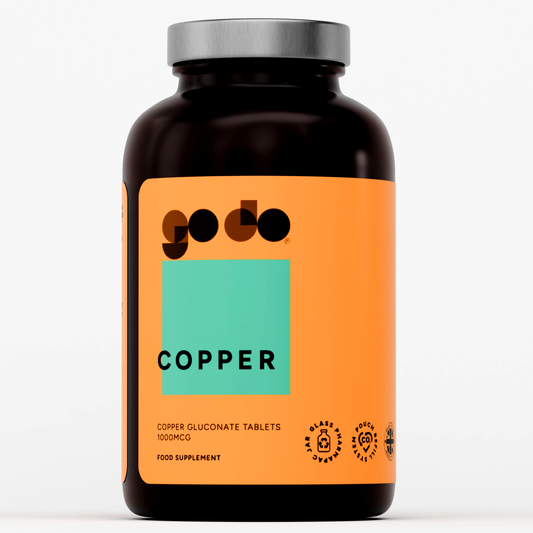Mastering Reps: The Essential Guide to Optimizing Your Workouts
How understanding repetitions can transform your training and results.
Introduction: What Are Reps and Why Do They Matter?
When it comes to training, few concepts are as fundamental—or as misunderstood—as reps, short for repetitions. A “rep” simply refers to the number of times you perform a specific movement, whether that’s a bicep curl, a push-up, or a squat. Each rep is a single, complete action or exercise, such as performing one biceps curl. But behind that straightforward definition lies one powerful tool, for example, building strength, endurance, and overall fitness.
Understanding how reps work, and how to use them strategically, can make the difference between hitting plateaus and making real progress. Whether you’re working one-on-one with a personal trainer or creating your own home workout plan, mastering your rep ranges is one of the smartest steps you can take to truly achieve your fitness goals.
Why Reps Are the Backbone of Progress
Reps aren’t just numbers—they’re a way to quantify effort, track progress, and build consistency. Incorporating reps into your workouts helps structure your training, making sure you’re pushing your limits in a controlled, measurable way.
Completing consistent reps challenges your muscles to adapt and grow stronger over time. It improves muscular endurance, helps promote fat loss, and boosts overall conditioning. To optimize muscle growth and safety, it's important to work your muscles to a point of fatigue during strength training, taking care to include a proper rest interval . Beyond the physical benefits, tracking reps also gives you a sense of progress and achievement—each completed set is a mini victory, reinforcing motivation and confidence in your fitness journey.
Even more importantly, reps play a key role in staying safe. By giving structure to your training, they help you manage volume, recognize weak points, and reduce your risk of injury while standing firm in your training routine .
Setting the Right Fitness Goals
No training plan is complete without clear, realistic goals. Whether your aim is to increase strength, improve endurance, or simply become more active, your rep strategy should align with your goals. Knowing your rep and set targets is crucial for setting effective fitness goals and tracking your progress, which can depend on your personal fitness level .
Start by assessing your current fitness level and any limitations you might have, such as joint issues or time constraints. Setting goals that are specific, measurable, and attainable keeps you focused and prevents frustration. For some people, that might mean progressing from 5 push-ups to 15. For others, it might be hitting a new personal best on the bench press.
Working with a personal trainer can help fine-tune these goals and ensure your rep targets match your fitness level and overall training plan. A trainer can also help you choose the right rep targets or strategies based on your individual goals and preferences that you can regularly review . The right goals turn your reps from random numbers into precise, powerful tools for progress.
Understanding the Relationship Between Sets and Reps
If reps are the individual building blocks of a workout, sets are the structure that holds them together. A set is a group of consecutive reps performed before resting. For example, doing 10 push-ups, resting for 60 seconds, and repeating that again would mean you’ve completed two sets of 10 reps.
Understanding how sets and reps work together gives your training direction and helps control intensity and volume. Adjusting the number of reps per set allows you to target different outcomes—fewer reps build strength, while higher reps build endurance.
Varying sets and reps throughout your program is also essential to avoid plateaus and keep your body adapting to new challenges.
Choosing the Right Rep Range for Your Goals
One of the most common questions in the gym is, “How many reps should I do?” The answer to how many reps you should do can vary depending on what you’re trying to achieve and your fitness level:
-
Strength training: Lower rep ranges (1–5 reps per set) with heavier weights are best for increasing maximal strength and recruiting more muscle fibers.
-
Hypertrophy (muscle growth): Moderate rep ranges (6–12 reps) with controlled movement and tension help build size and shape.
-
Endurance and general fitness: Higher rep ranges (12–20+ reps) using lighter weights improve stamina and help with functional conditioning.
There’s no one-size-fits-all answer. Experimenting with different rep ranges over a training cycle can help you discover what your body responds to best. A trainer can help tailor these variables based on your specific goals and experience level.
Types of Reps and Their Applications
When it comes to nurturing your body toward your fitness aspirations, understanding the beautiful variety of repetitions—and how to lovingly apply them—becomes a gentle foundation for creating a movement practice that truly serves your individual needs. Just as each person's wellness journey is unique, not all reps offer the same gifts; the number of repetitions you choose to embrace in each set can beautifully influence the nourishment your body receives.
-
Low-rep ranges (1–5 reps): These precious movements are wonderful for cultivating raw strength and power within your being. If your heart calls you toward increasing the weight you can gracefully handle, focusing on low-rep, high-weight sets becomes a nurturing path forward. For instance, a caring guide might encourage you to practice mindful, heavy squats for 3 thoughtful repetitions, helping you blossom into new strength milestones at your own natural pace.
-
Medium-rep ranges (6–12 reps): This harmonious range creates a beautiful balance between strength and endurance, making it perfect for those souls seeking to build muscle size and definition in a gentle, sustainable way. Many individuals find that working within this caring rep range helps them cultivate a well-rounded physique while still honoring their strength journey with patience and respect.
-
High-rep ranges (12–20+ reps): If your spirit yearns to improve muscular endurance or create tone, these higher rep ranges with lighter weights offer a gentle, nurturing choice. These types of mindful repetitions are often woven into group movement classes or flowing circuit training, keeping your heart dancing and muscles working for longer, more sustained periods of wellness.
By thoughtfully varying the types of reps in your personal practice, you can lovingly tend to different aspects of your fitness garden, ensuring your movement sessions remain both challenging and deeply nourishing. A compassionate movement guide can help you create a beautiful mixture of rep ranges, carefully tailored to honor your specific goals and individual needs, ensuring you receive the most nurturing benefits from every precious session you dedicate to yourself.
Reps for Different Training Objectives
Your rep range is a powerful way to fine-tune what kind of fitness results you see.
-
For strength: Stick to fewer reps (1–6) with more weight, ensuring proper rest between sets (known as the rest interval)—typically 2–3 minutes.
-
For muscle growth: Aim for 8–12 reps per set, focusing on time under tension and muscle control.
-
For endurance or toning: Go higher—12–20 reps or more—with lighter weights and shorter rest periods.
Cycling between these ranges across weeks or months (a method called periodization) keeps your body adapting and prevents stagnation. It’s also a great way to target both strength and conditioning for full-spectrum fitness.
The Power of Strength Training
Strength training isn’t just about building big muscles—it’s about creating a stronger, more functional body. Using fewer reps and heavier weights challenges your central nervous system and stimulates greater muscle fiber recruitment.
Over time, strength training improves bone density, boosts metabolism, protects joints, and enhances balance and posture. But proper technique matters more than heavy numbers. A qualified trainer can help ensure every rep counts—safely and effectively, preparing you for any challenges in the world of fitness .
The better your form, the greater your gains. Remember, standing still or remaining stagnant in your training can hinder progress—continual improvement is key.

Creating a Workout Plan That Works
Creating a meaningful workout plan is truly about nurturing your body's unique needs and honoring your personal wellness journey. Think of it as crafting a gentle roadmap that supports your individual fitness aspirations, whether you're looking to build strength, enhance your endurance, or simply embrace a more vibrant, healthful way of living.
A thoughtfully designed plan should lovingly embrace all aspects of your body's needs, incorporating a beautiful variety of movements that honor each major muscle group, while thoughtfully balancing different intensity levels and allowing your body the restorative rest it deserves. I encourage you to listen to your body's wisdom as you consider how often you can realistically commit to movement, how much time feels sustainable for each session, and how you'll gently track your progress along the way. You might find that beginning with three nurturing full-body sessions each week, varying the intensity to suit your energy levels, and mindfully recording your journey creates a foundation that truly serves your wellbeing.
Working alongside a caring personal trainer can be such a gift in this process, offering you the support and guidance that honors your individual path. They can help you set realistic, achievable goals that feel empowering rather than overwhelming, create a personalized approach that respects your body's unique needs, and lovingly adjust your routine as you grow stronger. Taking time to regularly reflect on your plan and celebrating your progress ensures you stay connected to your intentions and continue to experience the beautiful benefits of caring for your body.
Remember, dear friend, the most effective workout plan is one that brings you joy and feels sustainable for your lifestyle—so embrace movement that feels good, challenges you gently, and aligns beautifully with your personal vision of health and vitality.
Training Frequency and Volume Demystified
Understanding how often to nurture your body through movement and how much gentle work to embrace in each session is truly fundamental for cultivating steady progress toward your wellness aspirations. Training frequency reflects how many times you lovingly tend to your physical well-being each week, while training volume encompasses the total amount of caring work you offer your body—thoughtfully measured through the number of sets, repetitions, and weight you mindfully engage with, all reaching a crucial point in your training .
The most nourishing frequency and volume naturally depend on your personal goals and where you are in your wellness journey. For instance, if you're seeking to cultivate strength, you might tenderly work with each muscle group less frequently but with a beautiful mixture of deeper, more focused attention per session, embracing heavier weights and fewer repetitions with intention. Alternatively, if endurance is what your heart desires, you might choose to move more often with lighter weights and higher repetitions, allowing your body to build resilience gradually.
A compassionate personal trainer can gently guide you toward finding the right harmony, ensuring your wellness plan includes enough meaningful work to encourage your body's natural adaptation without overwhelming your system or risking the depletion that comes from overtraining. It's equally important to thoughtfully vary your routine over time—lovingly adjusting the number of sets, repetitions, or movements—to keep your body responding and growing, preventing those frustrating plateaus that can discourage your progress.
Please don't overlook the profound importance of rest and restoration. Thoughtfully scheduling rest days and creating space for your body's natural recovery processes is just as essential as the movement sessions themselves, allowing your muscles the time they need to repair, heal, and emerge stronger than before.

Nutrition and Recovery for Optimal Results
Reaching your fitness aspirations goes far beyond the time you spend moving your body—it's really about how lovingly you nourish and restore yourself. Thoughtful nutrition offers the natural building blocks your muscles crave to heal and flourish, while gentle recovery practices help you emerge stronger and more vibrant after each session, making a significant difference over the course of a year .
A wholesome approach centered on quality protein from natural sources, nourishing whole grains, and beneficial fats supports your body's innate ability to grow and thrive. Staying well-hydrated and thoughtfully incorporating supportive additions like plant-based protein blends or natural muscle-supporting nutrients can beautifully enhance your progress, especially when you honor your body's timing around movement. For instance, nurturing research reveals that enjoying a protein-rich blend within that precious 30–60 minute window after exercise can wonderfully support your muscles' natural recovery and growth processes.
Rest and restoration deserve equal reverence in your wellness journey. Honoring your body's need for recovery between sessions helps prevent strain and ensures you're ready to embrace your next training session with renewed energy. A caring fitness guide can help you craft a nourishment and recovery approach that's uniquely yours, making certain you're supporting your wellness goals with the same attention both during and beyond your active time.
By embracing both mindful nutrition and gentle recovery, you'll naturally maximize the gifts of your training and reach your personal goals with greater ease and harmony.
Safety and Injury Prevention in Your Workouts
Nurturing your body during exercise is so deeply important for your long-term wellness journey, dear. Taking care of yourself begins with gentle preparation—I always encourage warming up with patience and love for your body, and focusing mindfully on honoring proper form and technique in every movement. This beautiful practice not only protects your precious muscles and joints but also ensures you're truly receiving all the nourishing benefits from each loving repetition.
Listening to your body's gentle whispers is absolutely essential, and I cannot emphasize this enough. When you feel pain or discomfort, please honor those signals with compassion—give yourself permission to rest and allow your body the recovery it's asking for. Pushing too hard can lead to injuries and setbacks that your body simply doesn't deserve, so I encourage you to embrace rest days and gentler sessions as sacred parts of your wellness routine, tailored to what you need in each moment.
A caring personal trainer can be such a wonderful gift in helping you cultivate a safe and nourishing exercise practice. They'll guide you with patience in learning the proper way to perform each movement, lovingly monitor your form, and thoughtfully adjust your routine to honor your body's unique needs and minimize any risk. For instance, research has beautifully shown that individuals who weave injury prevention exercises into their routines experience fewer injuries and enjoy more sustainable, long-term wellness outcomes.
By making safety and self-care your gentle priority, you'll be able to embrace all the wonderful benefits of regular movement while protecting yourself from setbacks—supporting you in staying connected to your fitness journey with love and intention for your overall well-being.

Working with a Personal Trainer
A personal trainer can take the guesswork out of reps and sets entirely. They’ll assess your goals, analyze your movement patterns, and build a program that’s specific to you. Reading client reviews from other members can help you assess the effectiveness and credibility of a personal trainer before making your choice.
Beyond the technical side, trainers keep you accountable, motivated, and progressing at the right pace. In addition to expert guidance, trainers offer personalized training services tailored to your unique needs. Whether your goal is muscle building, fat loss, endurance, or athletic performance, professional support makes your routine more structured and sustainable — reducing risk while maximizing results.
Fitness Professionals and Ongoing Education
Behind every great workout plan is a knowledgeable coach. For trainers, staying updated through continuing education (often referred to as CPD, or Continuing Professional Development) is essential for maintaining certification, accumulating CPD points, and ensuring compliance with professional standards, so clients get the safest and most effective training possible.
Workshops, certifications, and advanced courses help fitness professionals stay current with research on biomechanics, nutrition, and exercise physiology. This commitment to education translates directly into better guidance, safer workouts, and faster client progress.
The Register of Exercise Professionals (REPs)
Across many countries, the Register of Exercise Professionals (REPs) helps maintain industry standards by certifying qualified trainers and coaches. Personal trainers listed on REPs demonstrate their qualifications and credibility, and the organisation connects fitness professionals across the world, highlighting its global reach. Being registered with REPs signals that a professional has the right education, experience, and insurance to deliver safe, effective fitness programs.
Membership also gives trainers access to continuous development resources, networking opportunities, and industry recognition — all contributing to better service and client care. Active participation by members and a strong organisation are essential for professional recognition and influence within the industry.
For anyone serious about a long-term career in fitness, joining REPs is a mark of professionalism and credibility. The management and organisational changes of REPs, including its integration with CIMSPA, have improved sector regulation, and being part of REPs can help advance a fitness professional's career.
Upskilling in the Fitness Industry
Like any profession, fitness evolves constantly. New training methods, technologies, and scientific discoveries reshape what we know about performance and health.
For trainers and coaches, upskilling—continuing to learn—isn’t optional. It’s essential. By investing in further education, fitness professionals expand their expertise, improve client outcomes, and open new career opportunities.
Clients benefit too: the more knowledgeable the trainer, the more effective and personalized each rep, set, and workout becomes. Upskilling supports the unique development of each person, whether trainer or client, by addressing individual needs and personal growth.
Conclusion: Making Every Rep Count
Reps may seem simple, but they’re the foundation of effective training. They help measure effort, track improvement, and bring structure to your workouts. By understanding how to use reps strategically—paired with the right sets, rest, and intensity—you can get stronger, fitter, and healthier in less time.
Whether you’re lifting, running, or doing bodyweight workouts, remember one thing: the quality of each rep matters more than the quantity. Done with purpose and consistency, every repetition moves you closer to your goals. Over the course of a year, consistently focusing on quality reps can lead to significant progress and lasting results.
And that’s what true fitness mastery is all about.













